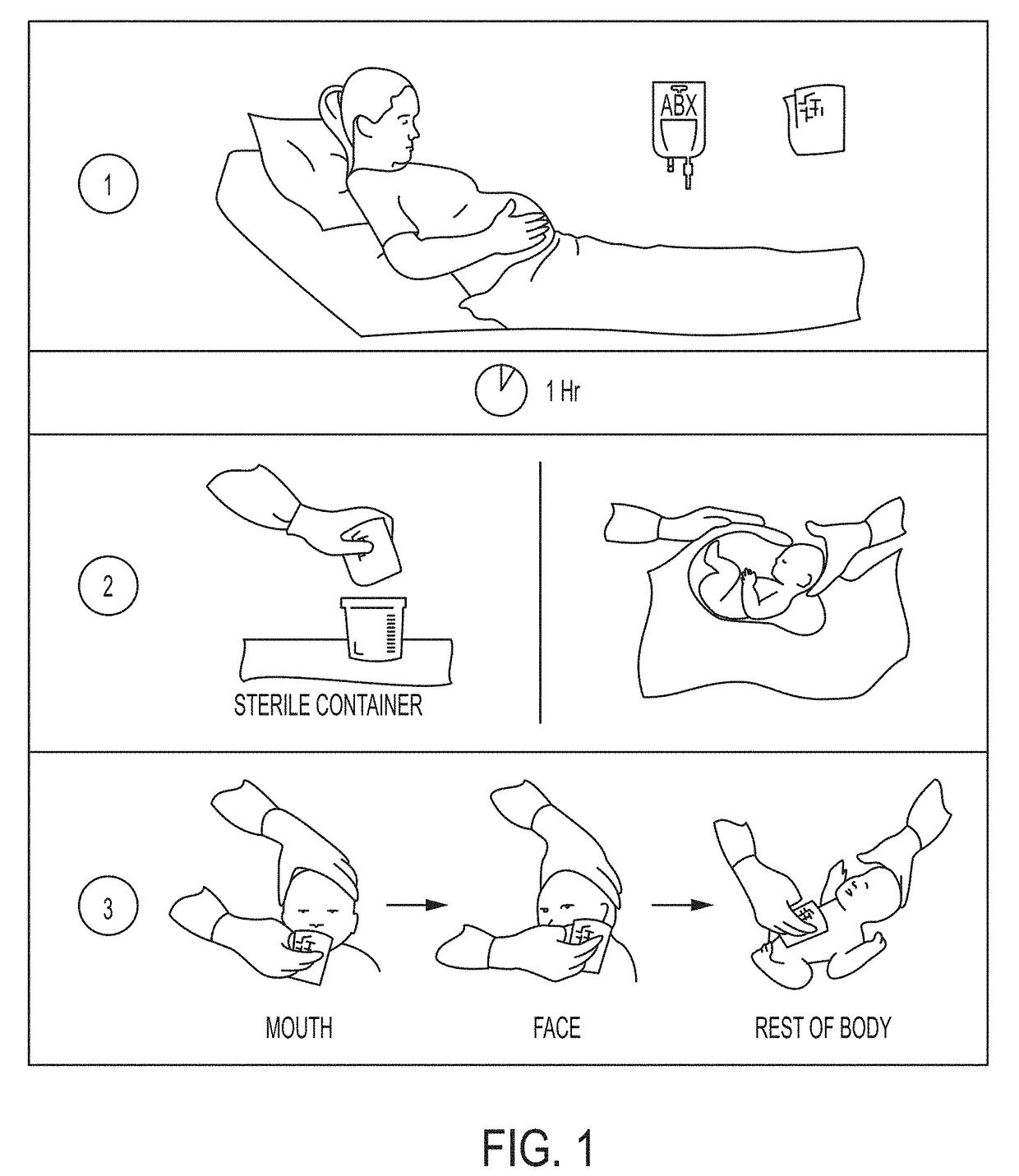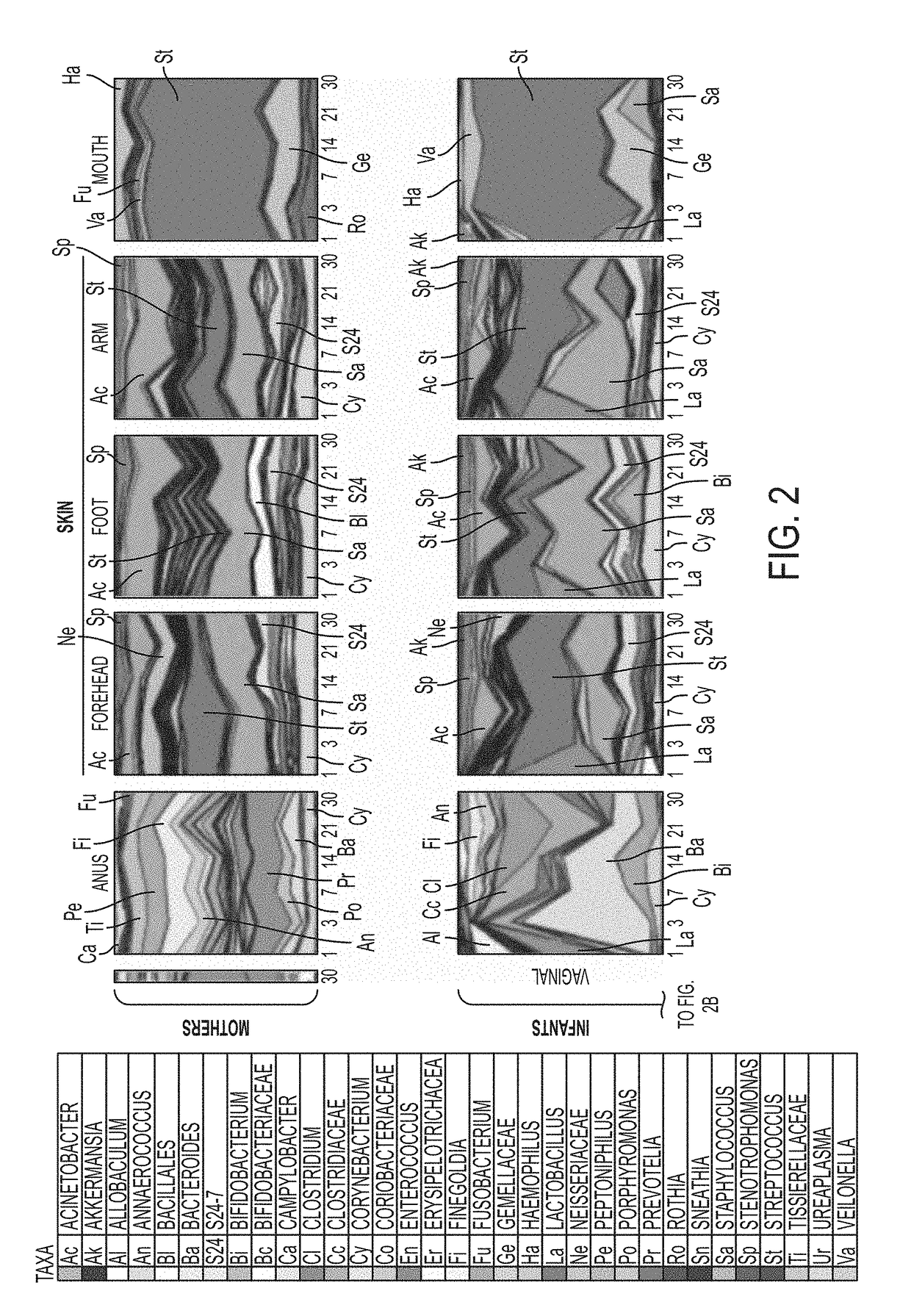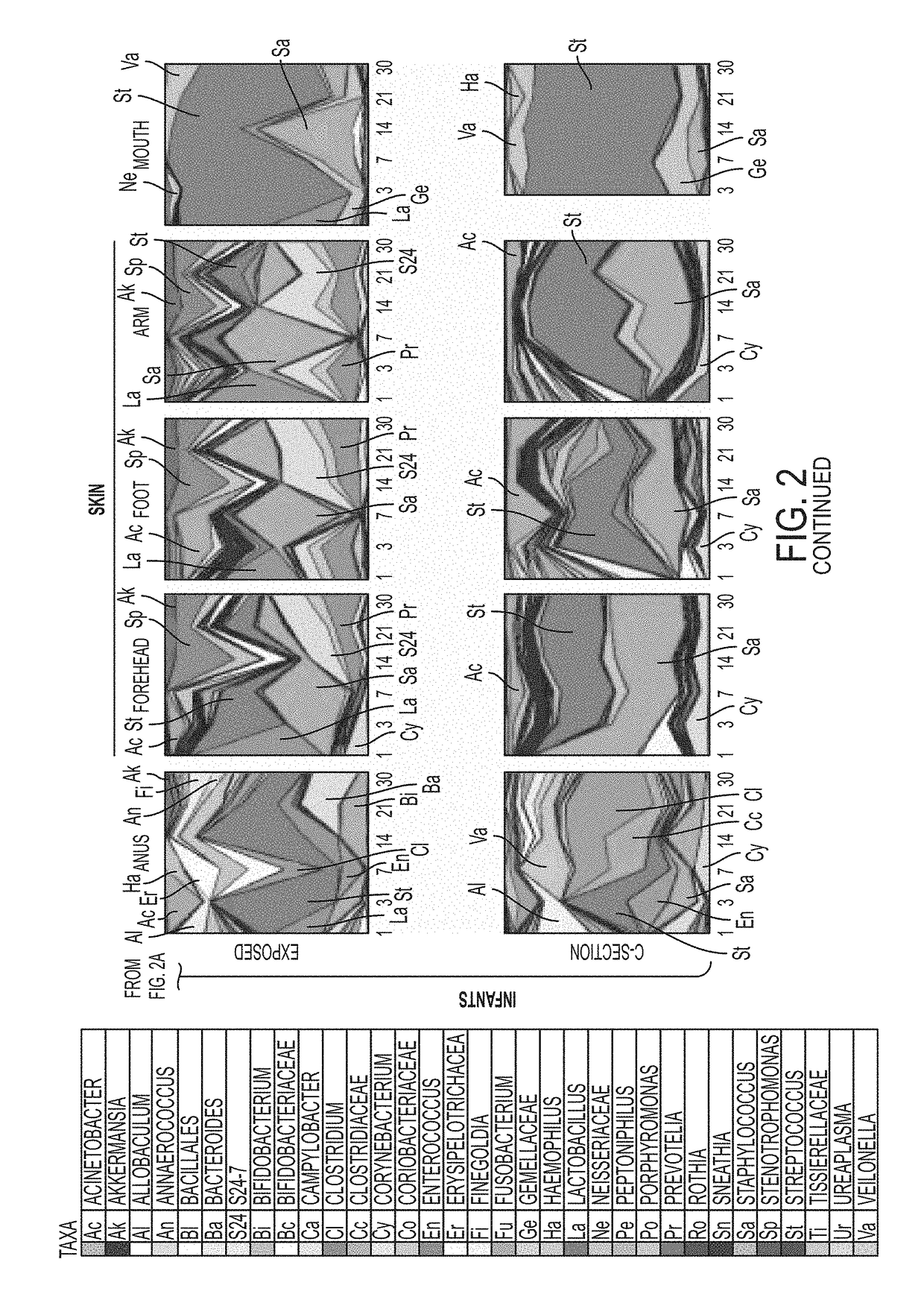Device and method of restoring microbiota of newborns
a microbiota and newborn technology, applied in medical preparations, vaccination/ovulation diagnostics, medical science, etc., can solve the problem of preventing the seeding of vaginal microorganisms in babies, and achieve the effect of reducing the effective dosage of each agent and generating additive or synergistic effects
- Summary
- Abstract
- Description
- Claims
- Application Information
AI Technical Summary
Benefits of technology
Problems solved by technology
Method used
Image
Examples
example 1
ing Maternal Vaginal Microbiome to Infants Under C-Section Deliveries
Materials and Methods
[0152]Study Design and Enrollment Criteria
[0153]The study protocol was approved by the Institutional Review Board of the University of Puerto Rico Recinto de Ciencias Medicas and Rio Piedras campus. Mothers were consented during their 3rd trimester control OBGYN control visit. There were three groups of mothers, by delivery and newborn exposure, and they included vaginal, C-section and C-section with exposure to maternal vaginal contents. Inclusion criteria included healthy mothers over 21 years of age, with uncomplicated pregnancies. C-sections were all scheduled, mostly due to previous C-section or maternal choice. For the C-section with exposure to maternal vaginal fluids group, mothers had to have vaginal pH<4 at the time of birth (as measured with a vaginal swab on pH paper). 18 mothers were recruited for this preliminary study, 7 of which gave birth vaginally and 11 by scheduled C-section...
example 2
on by Exposure to Vaginal Fluids in C-Section Delivered Infants
[0167]Since Cesarean-delivered infants were exposed to vaginal fluids through the use of sterile gauzes, the similarity of the microbiota of the gauzes to samples obtained from maternal body sites at day 1 was determined. The gauzes contained vaginal bacteria such as Lactobacillus, Prevotella, Garnerella, and in less proportion by Atopobium, Sneathia, Fusobacterium, and Ureoplasma, and were more similar to the microbiota of maternal vagina, than to that in other body sites (ANOVA p<0.01).
[0168]Vaginal gauze exposure lead to an infant microbiota closer to that typical of vaginal than C-section delivery, with partially restored vaginal markers that were lacking in C-section infants (FIG. 2, FIG. 6a-6c, Table 5). Major restored bacteria included Lactobacillus in all infant sites and the early bloom of gut Bacteroides, oral Gemella, and skin Bacteroidales S24-7 and Stenotrophomonas. However, these gauze-exposed C-section bab...
example 3
the Bacteria that Normalizes the Immune and Metabolic Development in Mice
[0172]The goal of the study is to determine if microbiota of C-section born infants leads to higher inflammatory response and is more obesogenic.
[0173]Transfer of whole natural microbiota or mixed or pure isolates (i) from human maternal vagina or (ii) from meconium / feces from babies born vaginally are used to determine immune profile and metabolic responses in GF mice, and are compared to GF mice who received a transfer of microbiota (iii) from meconium / feces from babies delivered by C-section.
[0174]The aim is to determine the microbial taxa responsible for the observed differences, and to optimize for restoring healthy phenotypes, i.e., minimizing the differences in responses of C-section related exposures, in relation to the vaginal control group. The final desired outcome is the alleviation of exposures that increase the risks of C-section associated disorders, using microbial exposures natural to mammals.
PUM
 Login to View More
Login to View More Abstract
Description
Claims
Application Information
 Login to View More
Login to View More - R&D
- Intellectual Property
- Life Sciences
- Materials
- Tech Scout
- Unparalleled Data Quality
- Higher Quality Content
- 60% Fewer Hallucinations
Browse by: Latest US Patents, China's latest patents, Technical Efficacy Thesaurus, Application Domain, Technology Topic, Popular Technical Reports.
© 2025 PatSnap. All rights reserved.Legal|Privacy policy|Modern Slavery Act Transparency Statement|Sitemap|About US| Contact US: help@patsnap.com



